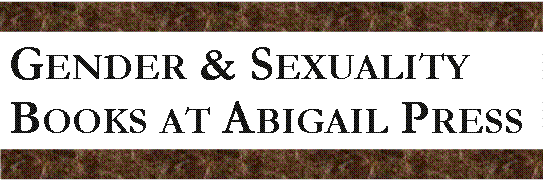
 |
|
For information on the authors and contents, click on the book icon. |
|
|
|
Gender and Sexuality: Perspectives on LGBT History and Current Issues in a Changing World, explores the arts, sciences, and history of lesbian, gay, bisexual and transgender (LGBT) individuals in the United States. This book was developed to help interested people better understand the rich and unique history that has become what is today’s LGBT civil rights movement. This volume is intended for a variety of audiences. Historians will find our discussion of the nineteenth, twentieth and twenty-first century illuminating. From the early American understandings of homosexuality in the nineteenth century, through the AIDS epidemic of the 1980s, the book will provide for a concise but honest account of LGBT rights and liberties across nearly 200 years. The social sciences, including psychology and social work, will also find utility in this text. For example, we describe the cumulative importance of early sexologists such as Karl Heinrich Ulrichs and Havelock Ellis to the medicalization of homosexuality and the inclusion (and finally removal) of homosexuality as a mental illness from the Diagnostic and Statistical Manual (DSM) of the American Psychiatric Society. We also describe in detail the HIV/AIDS epidemic among gay men and the way in which historical stigma has impacted the behavioral health of LGBT individuals into the twenty-first century. We also invite revolutionaries, civil rights activists, and queer theorists to consider our book for their classrooms, ensuring that the history of the LGBT community is accurately accounted. We focus several of the enclosed chapters on the birth of the gay rights movement, ranging from the first drag shows, the impact of World War II on the LGBT community, the sexual revolution of the 1960s, and the life and death of Harvey Milk. For scholars in the Arts and Letters, we include chapters on prominent gay writers, literature, movies, and television. Lesbians, gays, bisexuals, and transgendered men and women have never been more visible, more in the public eye, held more powerful positions in politics, the media, and education, or experienced more rapid advances in civil rights and social acceptance than in the past few years of American history. There have never been more openly LGBT novelists, poets, essayists, directors, actors, painters and sculptors along with athletes, journalists, members of the clergy, and politicians, having such a profound effect on American culture, religion, and public policy. Recent events underscore how relevant this work is. Even the most committed LGBT activists two decades ago could not have imagined the political climate prevailing as of the writing of this text. For information on the authors, contents, and Internet resources, click on the book icon. |






